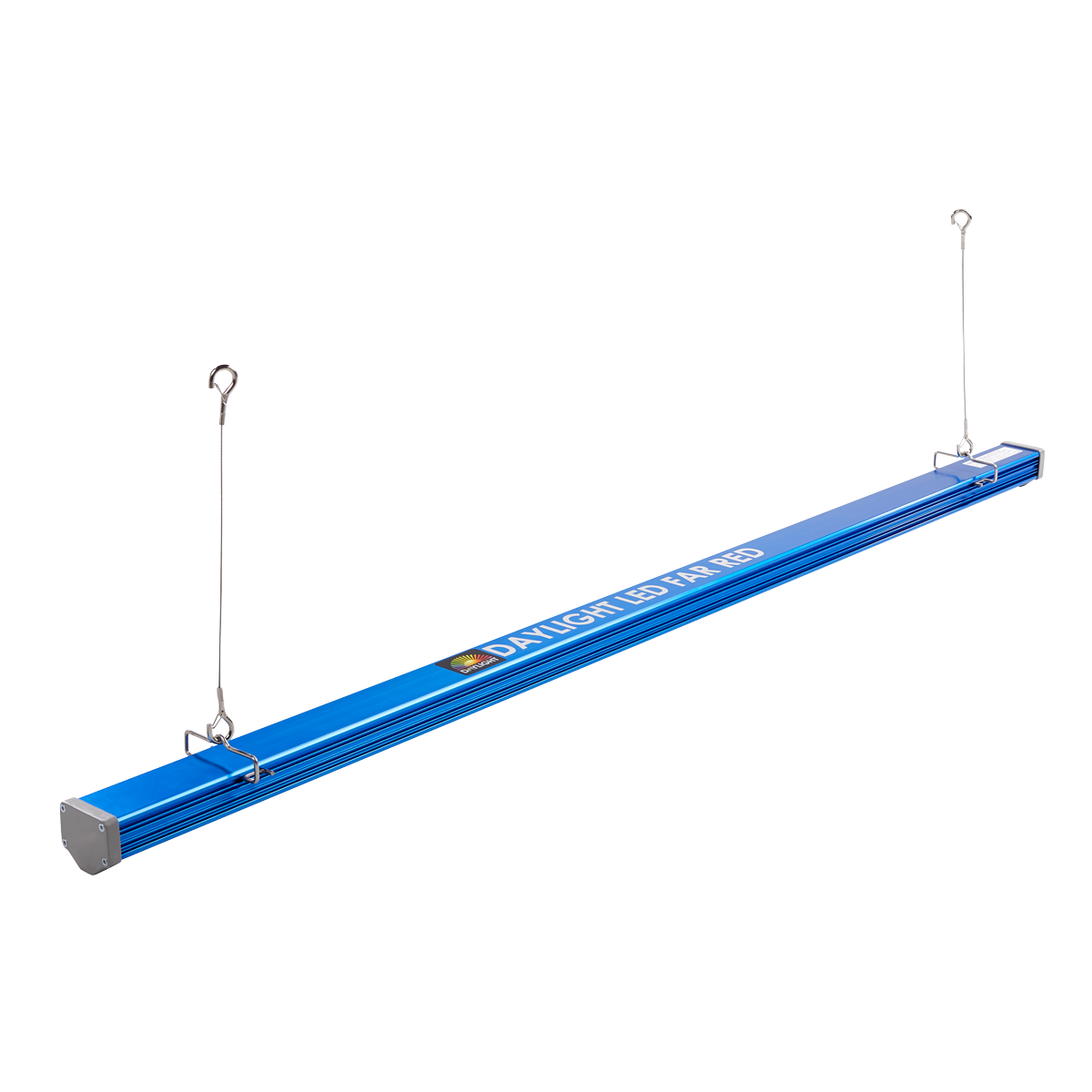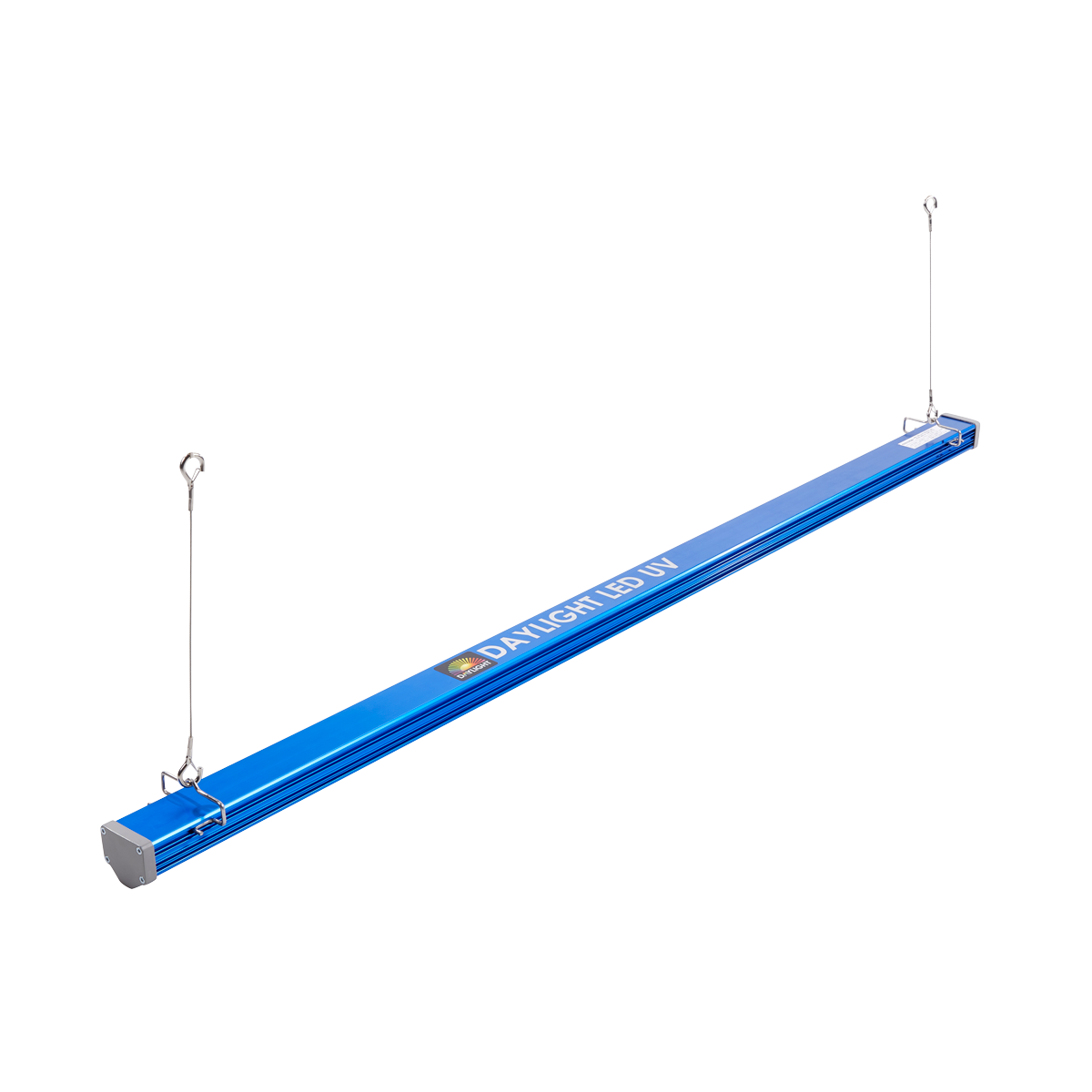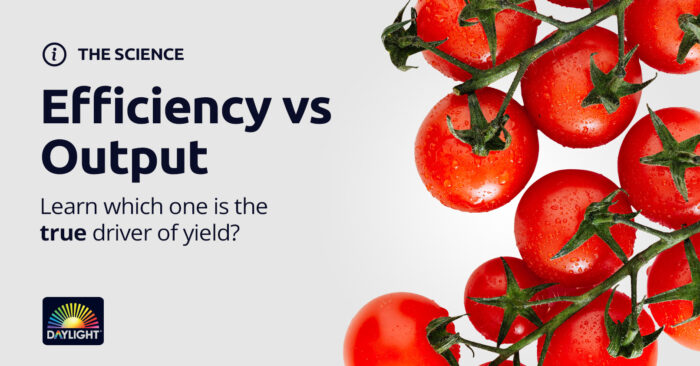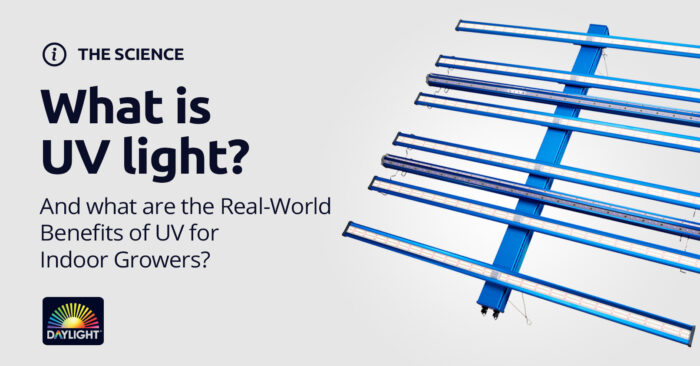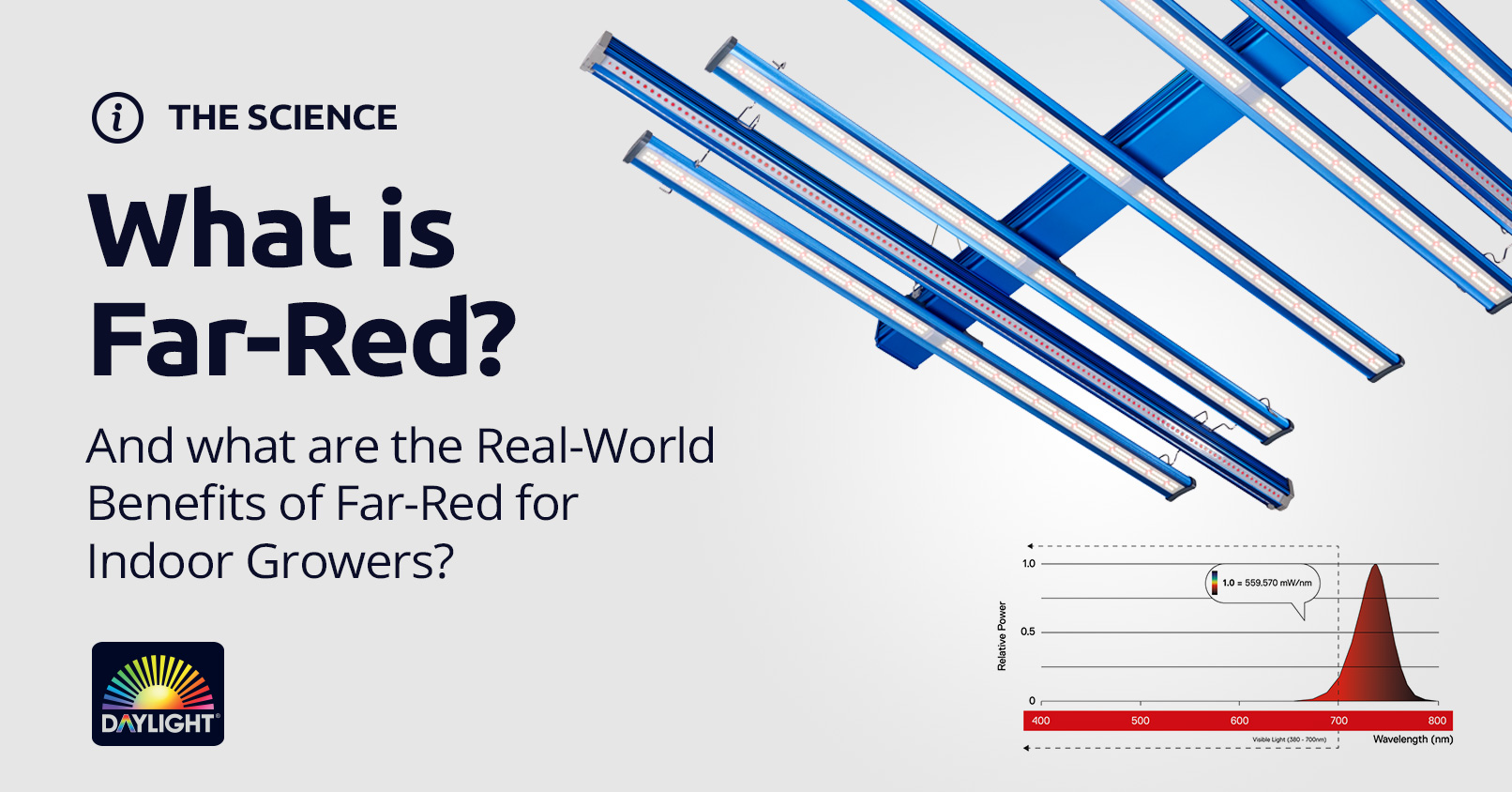
What are the Real-World Benefits of Far-Red for Indoor Growers?
Far-red occupies a strange hinterland of electromagnetic radiation where our ability to see (visible light) gives way to our capacity to feel (radiant heat). It is defined as electromagnetic radiation with a wavelength of between 700 and 750 nanometres (nm) with 730 nm being the generally accepted “sweet spot” among LED manufacturers—although some plant scientists extend the far-red range definition all the way up to 800 nm.
What can Far-Red do for your Plants?
- Speed-up Transition from Vegetative Growth to Flowering
Twenty to thirty minutes of exclusively far-red light at the beginning of each dark cycle can help to “reset” plant phytochromes that have been stimulated by regular red light during the day cycle. Think of far-red as the perfect “night cap” for your plants, giving them a head start on accumulating the nocturnal chemical signals which, in turn, stimulate the onset of flowering. - Increase the Size of Flowers
A higher ratio of far-red to red light produces a stretching / elongation response in plants. While this isn’t something that indoor growers typically seek during the vegetative phase, during flowering it can help to give flowers more room on the stem to grow and develop freely. - Promote the Production of Terpenes and Essential Oils
Far-red can boost the levels of key essential oils and terpenes—often key metrics of crop quality—especially when used in combination with UV light. - Boost Overall Photosynthetic Efficiency
If you’ve already heard of the “Emerson Effect” then you’re ahead of the game! Robert Emerson was a plant scientist who designed experiments to show that photosynthetic rates increased when chloroplasts (the light-harvesting parts of plants) were exposed to both red and far-red light. When exposed to both types of radiation at the same time, the photosynthetic yield was higher than the sum of the individual yields under isolated red light and far-red light.
The human eye’s sensitivity range starts to peter out at wavelengths above 700 nm. Bright red gives way to a dimmer but deeper red and, as we approach 750 nm (the upper limit of “far-red”), we stop perceiving this electromagnetic radiation as “light” altogether and we veritably enter the realm of infrared or radiant heat. Water molecules begin to absorb electromagnetic radiation very effectively between 760 nm and 800 nm. This means there is a significant heating effect on healthy plant tissue (as well as human skin) within this 760 – 800 nm range. Therefore most “far-red” LEDs generally emit electromagnetic radiation between 720 and 740 nm to elicit a far-red response without generating excessive radiant heat.
Don’t be “Dim” with Far-Red!
Far-red diodes are becoming increasingly common on LED grow lights. The human eye’s sensitivity to far-red makes these diodes appear as if they are glowing quite dimly, especially compared to diodes emitting light in the visible spectrum. However, don’t be fooled! Modern far-red emitting diodes are very powerful and intense!
NEVER stare at far-red diodes with your naked eye!
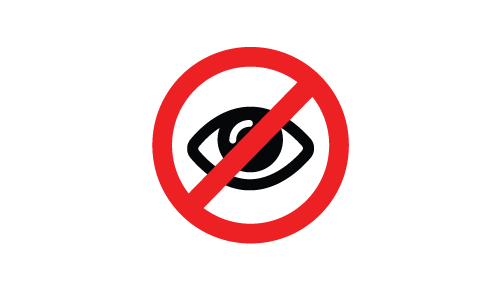
What about Plants and Far-Red?
Plants enjoy a similarly dynamic and transitional relationship with far-red. Up until recently, scientists downplayed the role of far-red in photosynthesis, characterising far-red plant response as mostly photomorphogenic, i.e. plants mainly use far-red to regulate growth patterns. However, during just the last few years, scientific research has revealed that plants do indeed harness far-red for photosynthesis, but only when it is delivered alongside light in the visible spectrum.
Far-Red, Shade Avoidance and Stem Elongation
Perhaps the most commonly known photomorphogenic use of far-red is shade avoidance. Plants have developed a type of photoreceptor called “phytochromes” which are able to sense the relative amounts of red and far-red light. Far-red light is mostly reflected by, or transmitted through, leaves. An abundance of red light tells plants that its leaves are basking in full sun, whereas more far-red than red indicates shading by other adjacent plants. Accordingly, when a plant senses that there’s more far-red than red, it responds by sending auxins to growth tips so stems elongate in an effort to vertically outgrow its shading neighbours and receive more light.
Far-Red in Sunlight vs. Far-red in Grow Lights
Incident solar radiation contains almost as much far-red as red light—around 20%. This is a huge number compared to the amount of far-red emitted by most grow lights. White (5000K) LEDs emit only a tiny amount of far-red (< 3%); high pressure sodium is also low (3%); metal halide emits slightly more (6%); 3K CMH contains 8% far-red and 4K CMH up to 11%.
Sunlight’s high proportion of far-red is offset by the richness of ultraviolet (UV) and blue in the solar spectrum. Grow lights do not contain as much UV and blue as sunlight, so the effect of far-red emitted from your grow lights is amplified.
When to use Far-Red: Vegetative Growth, Transition, or Flowering / Bloom?
The conscious use of far-red among indoor growers is a relatively new phenomenon and many of the benefits remain anecdotal. The use of far-red during the vegetative stage can lead to unhelpful stem elongation which can, in turn, lead to tall, gangly plants that are both unstable and difficult to illuminate efficiently. Some far-red has been shown to increase leaf size which can boost overall levels of photosynthesis and increase yields substantially in leafy green crops, but indoor growers of flowering and fruiting species are best advised to focus first on achieving a blue-rich spectra for vegetative growth to keep plants compact and stout.
The risk of excess stretching through the transition period between vegetative and generative development can be mitigated through careful control of daytime and night-time temperatures. If a small tDiff (temperature differential between day and night) can be maintained (0 – 5 °C) the inclusion of some far-red during this time can help to reduce the duration of transition in some plant species, especially long-day photoperiodic, speeding up the onset of flowering. The key thing to remember when using far-red during transition is to make sure there is more red light (around 660 nm) than far-red. Most LED grow light fixtures are designed to ensure this is always the case. Finally, some growers are experimenting with giving their plants 20 to 30 minutes of (exclusive) far-red light at the beginning of the dark period in an effort to speed up transition between vegetative and generative phase.
Far-red in the flowering phase is arguably where things get the most exciting. Indoor growers report improved terpenes, more abundant flower sites and larger flower mass. This is a time when red light is normally supplied in abundance so if you’re going to include some far-red in the mix, this is the time.
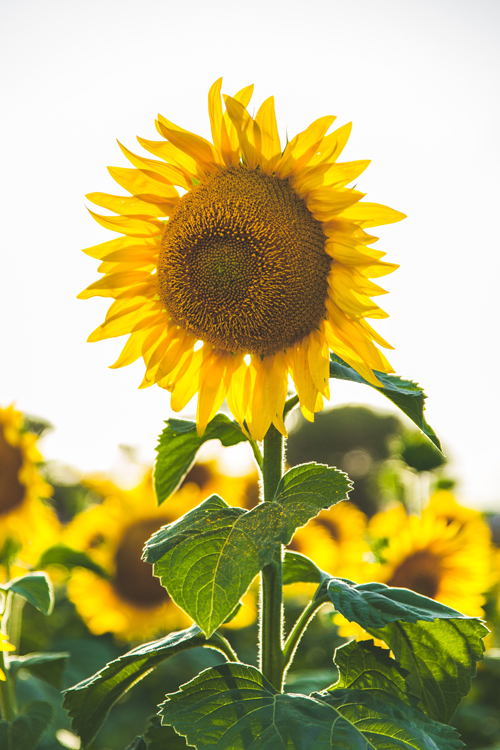
Measuring Far-Red
Apogee instruments have just released their new ePAR meter which extends the PAR range from the traditional 400 – 700 nm to the new extended “ePAR” range of 380 – 760 nm. Apogee chief, Bruce Bugbee, conducted some groundbreaking research with Shuyang Zhen at the Crop Physiology Laboratory (Department of Plants Soils and Climate, Utah State University, Logan, Utah, United States) which indicated a sort of “Emerson Effect” when adding far-red light to white light. Bugbee and Zhen grew lettuce in climate controlled cultivation chambers and found that their plants produced more biomass under 300 µmol/s of white light and 50 µmol/s of far-red compared with 350 µmol/s of white light.
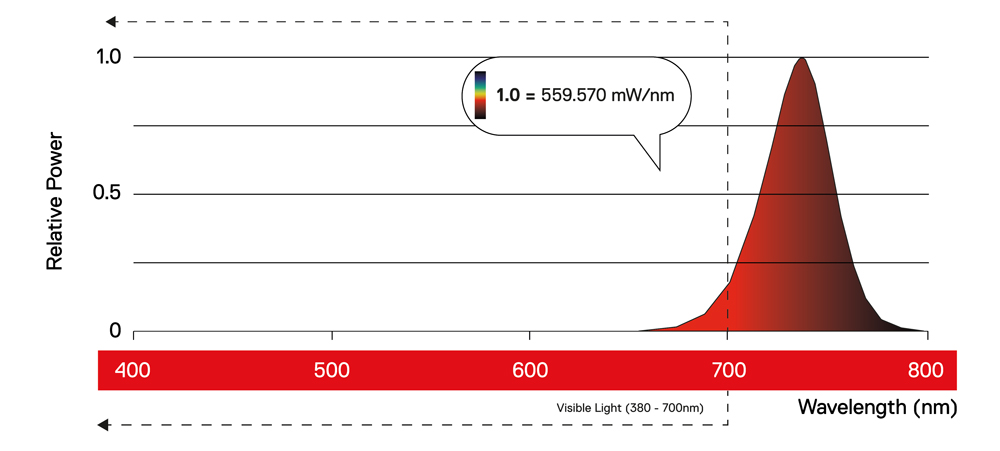
Look out for more Far-Red in LED Fixtures in Late 2021 and 2022
With all the emerging benefits of incorporating far-red into your plants’ lighting diets, it’s no surprise that far-red is fast becoming an increasingly hot topic among indoor growers—both in hobbyist and commercial circles. Full-spectrum or broad-spectrum output is no longer the key requirement of sole light source LED horticultural lighting fixtures. More and more, we expect to see LED lighting manufacturers and resellers promoting the inclusion of far-red (and perhaps also UV) into their lighting systems.
Consumers should not be put off by the slightly lower PPE (photosynthetic photon efficacy) numbers that will inevitably accompany this new breed of LED fixture, as UV and far-red photons are not traditionally counted in PPF, PPFD or PPE measurements. New metrics of performance and efficiency are already emerging that reflect the extended “ePAR” range proposed by Bugbee and Zhen.

